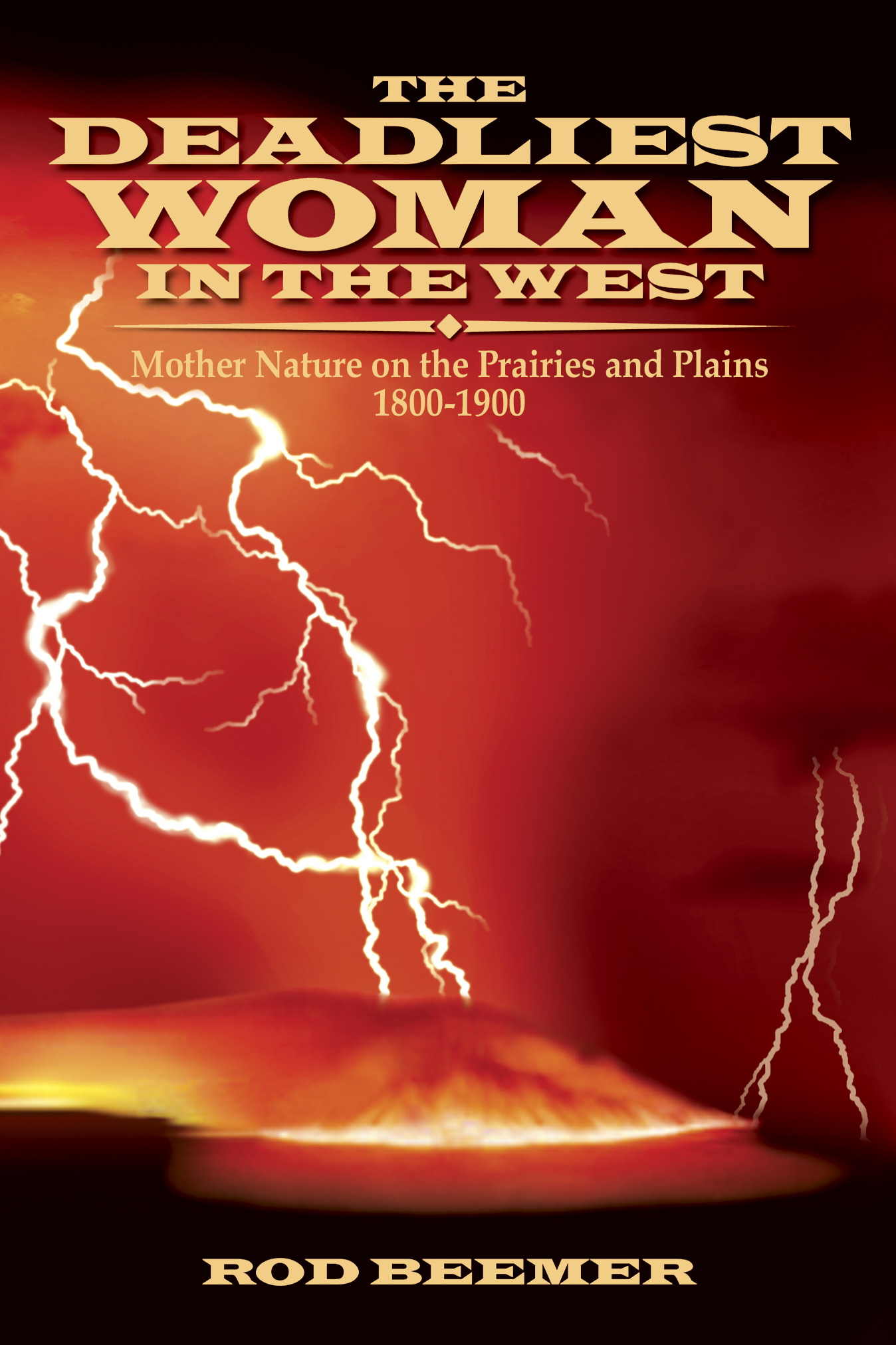Prairie Fires on the Santa Fe Trail(from The Deadliest Woman in the West: Mother Nature on the Prairies and Plains, 1800-1900, by Rod Beemer, 2006)
During
the fall of 1852 a high drama unfolded on the Santa Fe Trail when a
troop of U.S. Cavalry went into camp near Diamond Springs, in what is
now Kansas. In the waning hours before sundown a party of Indians set
fires on all sides of their camp. The full account was described by
Colonel Percival G. Lowe.

"Nothing of special
interest occurred until we reached Diamond Springs, now in Morris County.
The weather had been frosty at night and days sunny--a continuous Indian
summer all the way--grass dry as powder . . . All day we had seen little
bands of Indians a mile or two off the road traveling the same
direction that we were and apparently watching us. This was the Kaw
country and probably no other Indians were there, and we could hardly
understand why they kept aloof and watched our progress . . . We camped
on high ground a little east of Diamond Springs, on the south side of
the road. We had been very careful of fire all the way in, and here
we were especially careful on account of the dense growth of grass and
the consequent danger of burning the camp. We had finished dinner, about
two hours before sunset when, as if by one act, fire broke out in a
circle all around us not more than a mile from camp. A stiff gale was
blowing from the south, and when we noticed it the fire in the tall
grass was roaring furiously and the flames leaping twenty feet high.
Quickly we commenced firing outside our camp, whipping out the fire
next to it, thereby burning a circle around it. Every man used a gunny
sack or saddle blanket and worked with desperate energy. The utter destruction
of the camp was imminent, and we faced the fire like men who had everything
at stake. Success was ours, but the battle left scars on nearly all.
I have never seen fifteen minutes of such desperate work followed by
such exhaustion--scarcely a man could speak. Blinded by smoke, heat
and ashes, intuitively we found our way to the creek and bathed our
burned hands and faces, many of us terribly blistered. My hands
and face were blistered in several places; my mustache and whiskers,
the first I had ever raised, were utterly ruined; I could not wash on
account of the blisters, and dipped my face and head deep down in the
lovely spring of water and held my hands under to relieve the pain.
My experience was that of most of the troop. We had quite a quantity
of antelope tallow, which was warmed and gently applied to our sores.
Undoubtedly the Kaws had set fire to burn us out."
More Kansas Prairie Fires:
The
summer of 1871 also saw substantial fires in the central plains. Further
settlement of Morris County, Kansas, was brought to a halt in
1871 when a prairie fire swept in from the west. It was fought by all
the male citizens under the leadership of Patrick Maloney, who was said
to be 'the best fire fighter in the state.' The women pumped water and
two small boys of the town, Will Miller and Graff Abbot, wet the sacks.
A man and woman drove furiously in a buggy for 60 miles, it is said,
ahead of the fire and when they stopped both horses dropped dead.
|
